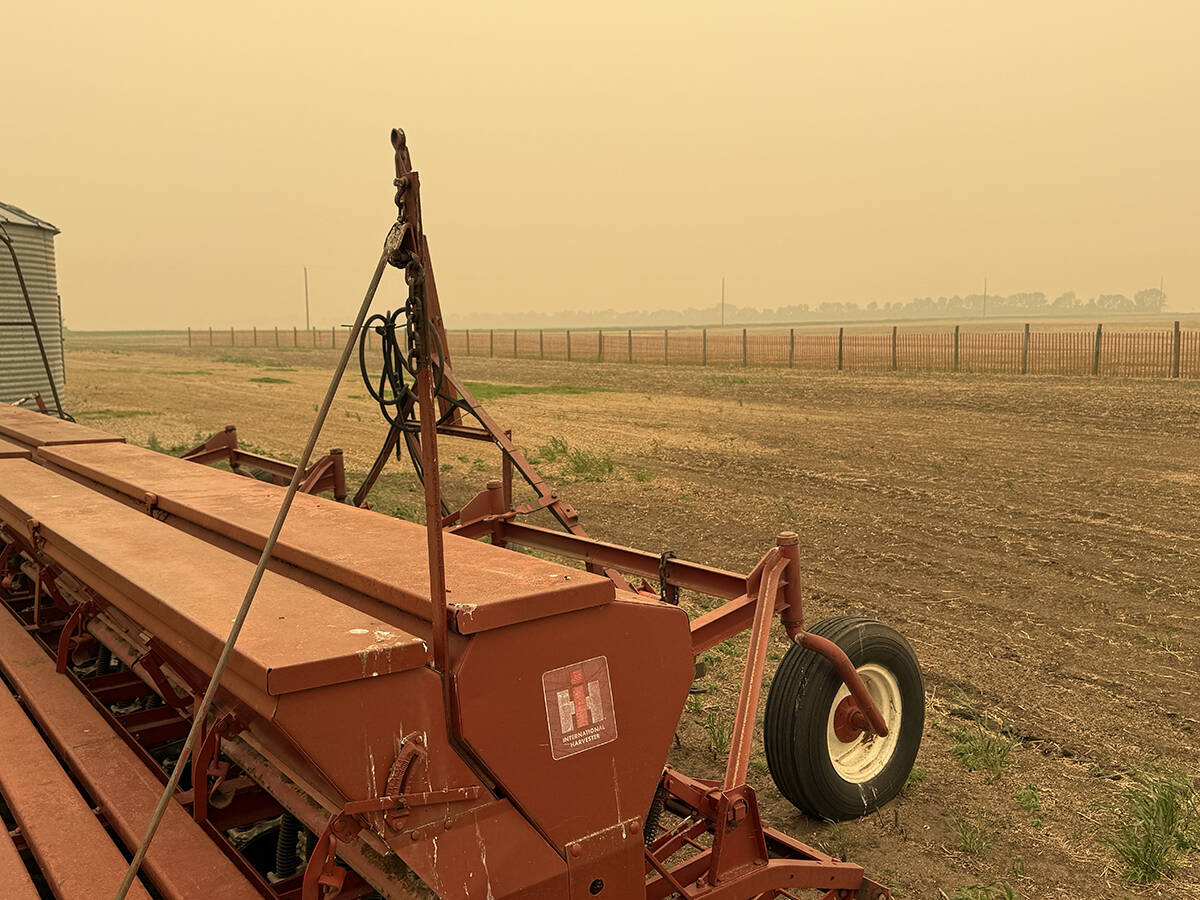Farmers usually apply more science than art to seeding crops.
But come 1999, some farmers east and south of Winnipeg may see art as a bigger part of their spring seeding picture.
Two organizations plan to rent farmers’ land and use it as canvasses.
They want to seed shapes, images and corporate logos for the large audience expected to fly over the fields on their way to the 1999 Pan American Games in Winnipeg.
Suzanne Gillies started thinking about crop art in 1996 while flying over the Prairies and looking down at the “abstract images” left in worked land.
Read Also

Wildfires have unexpected upside this year
One farmer feels smoke from nearby wildfires shrouded the July skies and protected his crop from the sun’s burning rays, resulting in more seeds per pod and more pods per plant.
Gillies is the director of the Institute of Contemporary Art and Design, a non-profit group dedicated to getting art out of buildings and into more public forums.
So she got a small grant from the Manitoba Arts Council to research the idea of bringing art down to the grassroots, literally.
Gillies discovered crop art has been done before, but never to the scale planned for next summer.
She hopes to see eight 80-acre images on a flight path near Dugald, Man., each accompanied by an 80-acre logo of a corporate sponsor for the project.
Gillies believes the project will improve understanding between urban and rural people.
In fact, the project led to her first encounter with farm folk.
She worked on budgets with Brent Reid, a provincial agricultural rep from Dugald, who set up a meeting with farmers.
“I was so shy to go out, you know, because I’m like, sort of like an art girl: I wear black, too many bracelets, lots of makeup … . But they were just great,” she said.
She has land on offer until this fall at $150 per acre, and hopes to have sponsors lined up by then.
The crop art will be priced at $400 per acre to cover labor, input and rental costs.
“In all frankness, I don’t think $64,000 for two fields for the biggest images in the world for that time period is a lot of money,” said Gillies.
She is sending out a call for submissions to artists this summer, and plans to hold a juried exhibition of their ideas next spring. If the project proceeds and the mature art is eventually harvested, Gillies plans to donate it to the Canadian Food Grains Bank and local food bank Winnipeg Harvest.
Field of commercials
Meanwhile, Starbuck, Man., farmer Milton Shirtliff and his partner Kevin Nixon had been thinking for years about using fields as a new advertising medium.
Shirtliff has been scouting out land around Oak Bluff, under another flight path for arrivals to Winnipeg, for at least six quarter- to half-section “billboards.”
Last July, 1,050 planes flew about a kilometre over the land during daylight hours.
They’re starting to approach corporations and governments to see whether they’d like to see their logo sowed into the ground.
They’ve been encouraged in their business venture by enthusiastic response from John Deere.
“We believe if we actually pull it off, it’ll have worldwide media coverage,” said Shirtliff. This summer, he’ll experiment with crop colors and techniques.
“I don’t think we’re going to have too much trouble getting the land because we’re offering such a high rent,” said Shirtliff.
The going rent for land in the area is $35 to $40 per acre. He is looking at offering $100.














